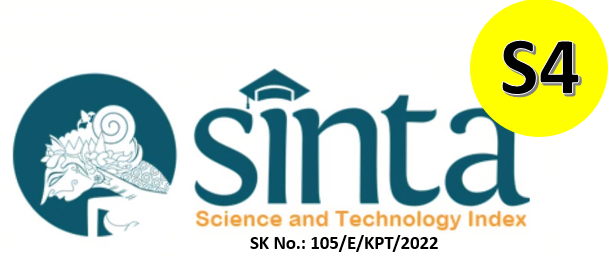Editorial Policies
Table of Contents
- Focus and Scope
- Section Policies
- Peer Review Process
- Publication Frequency
- Open Access Policy
- Licencing and Archiving
- Screening Plagiarism
- Reviewers’ Guideline
- Publication Fees
BIOTROPIC : The Journal of Tropical Biology publish articles on tropical biology from various perspectives, covering both literary and fieldwork studies. The Journal put emphasis on aspects related to Ecology, Zoology, Botany, Microbiology, Biology molecular, Biospeleology, Conservation, and other tropical biology discourses
Articles
 Open Submissions Open Submissions |
 Indexed Indexed |
 Peer Reviewed Peer Reviewed |
Manuscripts submitted to Biotropic will undergo a selection and assessment process by the Editorial Boards to ensure their accordance with the writing guideline, focus, and scope, and that they are of excellent academic quality. The manuscripts will be reviewed using the double-blind peer review method in which case neither authors nor reviewers know each other’s identities.
Desk Review. At the desk review stage, manuscripts will be examined to ensure that they have met the writing guideline, focus, and scope with excellent academic quality. If they do not meet the conditions, the author will be given the opportunity to revise their manuscript according to the given criteria. However, there is also the possibility that the manuscript will be directly rejected.
Peer review. When the manuscript has passed the desk review stage, it will then be delivered to two reviewers who are experts in the field of the submitted manuscript. The review process will be done within 8 weeks. Manuscripts that did not successfully pass the desk review process will not proceed to this stage.
Reviewer’s decision. The reviewers will provide the following recommendations:
- Accepted; means that the manuscript is acceptable for publication
- Accepted with minor revisions; means that the manuscript is acceptable for publication once it is revised in response to the reviewers’ concerns
- Accepted with major revisions; means that substantive inadequacies in the manuscript, such as data analysis, the main theory used, and rewriting of paragraphs, need to be revised
- Rejected; means that the manuscript is not acceptable for publication or the given reviews relate to very basic issues
The reviewer’s decision will be considered by the Board of Editors to determine the ensuing process of the manuscript.
Revision Stage. Once the manuscript has been received with notations of minor or major revisions, it will be returned to the author with a review summary form. For manuscripts accepted with major revisions, authors are allotted 3 weeks to revise. Whereas for manuscripts accepted with minor revisions, 1 week is allotted for revision. When returning the revised manuscript, the author is required to fill in and attach the review summary form.
Final decision. At this stage, the manuscript will be re-evaluated by the Board of Editors to ensure that the author has revised in response to the reviewers’ concerns. In this final decision, the manuscript may still be rejected if the author did not seriously conduct the revisions necessary.
Publication confirmation. At this stage, the final layout of the manuscript will be resent to the author to ensure that the content is in accordance with the author’s writing. At this stage, the author may revise any typographical error found in the final manuscript. Once confirmation from the author is given, the Editorial Secretary will process the manuscript for online publication on the website as well as a print publication.
The journal is published biannually i.e. February and August.
Biotropic published via journal website (http://jurnalsaintek.uinsby.ac.id/index.php/biotropic)
Biotropic : The Journal of Tropical Biology published by Department of Biology, Faculty of Science and Technology, UIN Sunan Ampel Surabaya.
This journal provides immediate open access to its content on the principle that making research freely available to the public supports a greater global exchange of knowledge.
This work is licensed under a Creative Commons Attribution-NonCommercial-ShareAlike 4.0 International License. This license lets others distribute, remix, tweak, and build upon your work, even commercially, and license derivative works under similar terms. Furthermore, Biotropic : The Journal of Tropical Biology is archived in Portal Garuda.
We accept all terms and conditions of COPE about plagiarism and in case, any attempt of plagiarism is brought to our attention accompanied by convincing evidence, we act based on flowcharts and workflows determined in COPE. All submissions will be checked with TURNITIN: new submission and after acceptance from the editorial boards. We do not process any plagiarised content. If an article has over 20% plagiarism based on the result of the check, we will send back the article to the author to be revised for the plagiarised contents.
REVIEWERS’ GUIDELINES:
Manuscripts submitted to Biotropic : The Journal of Tropical Biology will undergo a blind review process. The reviewers are tasked to carry out reviews that include analyses and assessments of manuscripts’ acceptability to be published in Biotropic : The Journal of Tropical Biology. Reviewers should consider the following points prior to conducting their review:
- Does the manuscript you are being asked to review match your expertise?
If the article does not sufficiently match your area of expertise, please notify the Editorial Secretary. - Do you have time to review the manuscript?
The review process should be completed within 2 weeks after a manuscript has been sent. If you do not agree with this condition and need more time to review it, please contact the Editorial Secretary - Are there any conflicts of interest with the manuscript?
If you have any conflicts of interest with the manuscript, please contact the Editorial Secretary. - Are there any indications of plagiarism in the manuscript?
If you suspect any indications of plagiarism in the manuscript, please contact the Editorial Secretary immediately
Review Process:
- Title: Does it clearly describe the manuscript?
- Abstract: Does it reflect the content of the manuscript?
- Introduction: The introduction should contain the general background and research questions or hypotheses. The literature review should be included in the introduction.
- Has the manuscript met the required journal writing guideline?
Content:
- If the issue relating to the reviewed manuscript has previously been published, is the manuscript sufficient to warrant publication?
- Does the manuscript contain novelty, profound knowledge, and interesting points to warrant publication?
- Does the manuscript contribute to the development of science and knowledge?
- Are the main theories or references used in line with the study?
Method:
- Does the author accurately describe how the data was collected?
- Does the article answer the questions posed in the study?
- Are new methods used? If there are new methods, are they explained in detail?
Results and Discussion:
The results should explain the findings of the author. This section should be written clearly in a logical sequence. Reviewers need to consider if the appropriate analysis has been conducted.
Conclusion:
The conclusion should contain recommendations and summary of the research. The summary should have examples of answers corresponding to the research objective or the acquired findings. The summary should not contain repetitions of research results or discussions. The recommendations provided should correlate with the concept of the conducted research or suggestions for improving the study.
Table and Figures:
The tables and figures presented should correlate with the article’s content and they should have clear sources of reference (such as books, journals, websites, or other references)
References:
Please ensure that every reference cited in the text is written in the reference list using the American Psychological Association (APA) style. The references used should be published within the last 10 years, consisting of 80% from journal articles and 20% from books, theses, or other relevant publications.
Writing Style:
Please write your text in good English that is interesting to read and easy to understand.
Final Review:
- Assessment of the manuscript review should be written in the Review Form sent by the Editorial Secretary.
- Reviewers are required to fill in the table marked with asterisks.
- At the end of the review, reviewers are required to give one of the following recommendations:
- Accepted; means that the manuscript is acceptable for publication
- Accepted with minor revisions; means that the manuscript is acceptable for publication.
- Accepted with major revisions; means that substantive inadequacies in the manuscript, such as data analysis, the main theory used, and rewriting of paragraphs, need to be revised once it is revised in response to the reviewer's concerns
- Rejected; means that the manuscript is not acceptable for publication or the given reviews relate to very basic issues
- Upon completion of the review form, please fill in the reviewer’s identity in the corresponding columns.
This journal charges the following author fees.
Article Publication: Rp350,000. (IDR)
This journal charges the article publication fee for supporting the cost of wide-open access dissemination of research results, managing the various costs associated with handling and editing of the submitted manuscripts, and the Journal management and publication in general, the authors or the author's institution is requested to pay a publication fee for each article accepted. The fee covers:
- The payment also included delivery fees of the hardcopy to the corresponding author.
- DOI registration for each paper.
- Checking the article similarity by Turnitin; the final result will be sent to authors (by request).
- FREE OF CHARGE will be available for paper submission of authors from a minimum of five countries.












